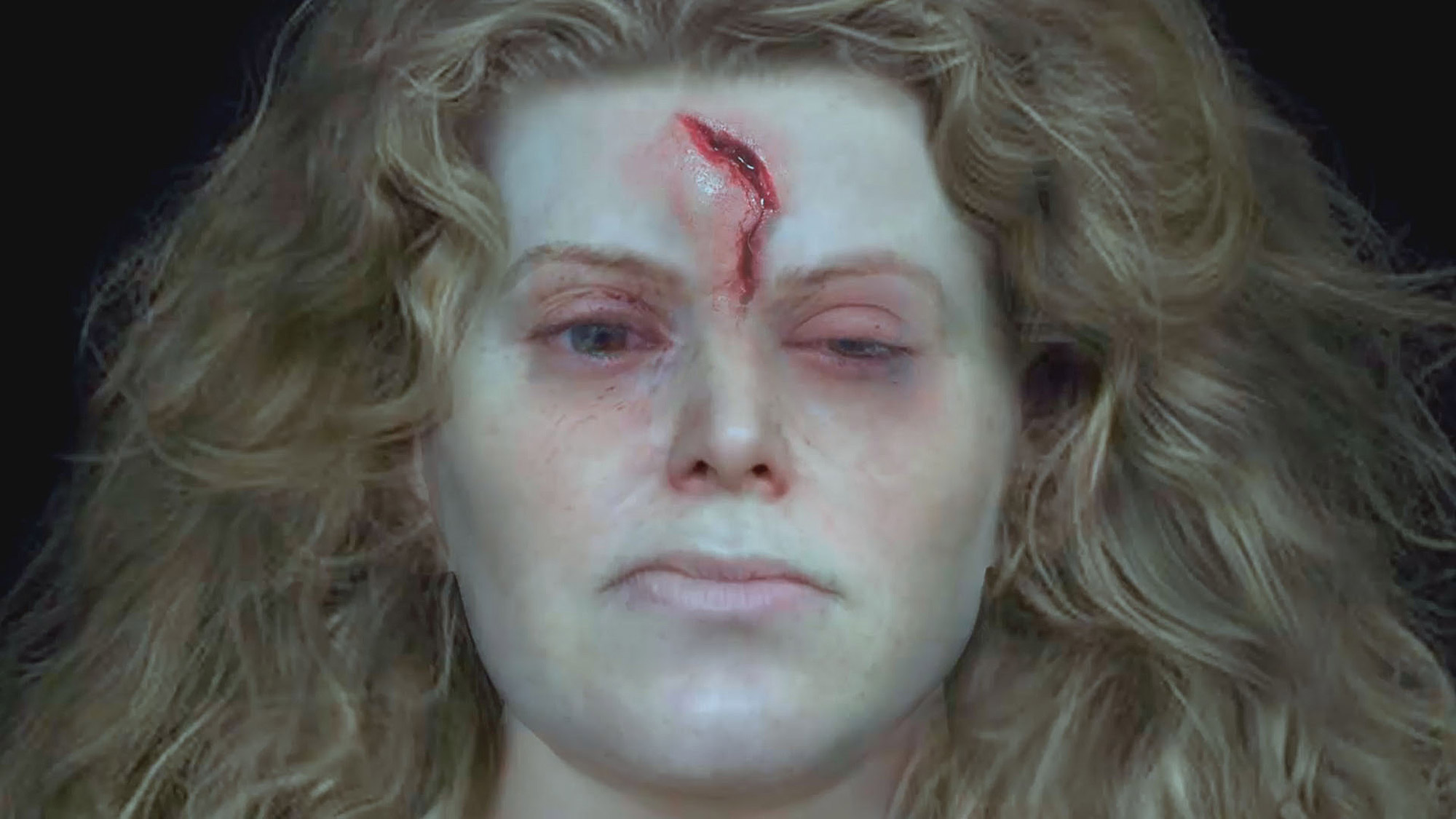Battle-Scarred Viking Shield-Maiden Gets Facial Reconstruction for First Time
First unearthed in 1900, this 1,000-year-old Viking shield-maiden was apparently cut down in her prime.

When the sword came down upon her head, the blade cut her to the bone. Scientists studying the Viking woman's fractured skull 1,000 years later still aren't sure whether the blow actually killed her — however, the trove of weapons buried with her make it clear that she died a warrior nonetheless.
That Viking, who lived and died around the year 900, was first excavated from a farm in Solør, Norway, in 1900. Her head rested on a shield, a bridled horse skeleton lay curled at her feet, and her body was boxed in by a sword, spear, battle-ax and arrows. When a quick analysis revealed the skeleton to be female, it was immediately interpreted as the first physical example of a shield-maiden — a mythical female warrior only referenced in medieval texts before then.
Now, for the first time, researchers at the University of Dundee in Scotland have used facial reconstruction technology to re-create that maiden's appearance — including the wound that may have ended her career.
Related: Viking Warrior Is Actually a Woman
The results, which you can see above and in the new National Geographic documentary "Viking Warrior Women," show a woman of about 18 or 19 years old with a strong jaw, swollen eye and a forehead that's seen better days. According to the team's analysis of the warrior's skull, the maiden suffered a serious head injury consistent with a sword strike — however, the wound showed signs of healing and may not have been her ultimate cause of death.
Whether the wound was fatal or not, the new reconstruction suggests that this skeleton may be "the first evidence ever found of a Viking woman with a battle injury," archaeologist Ella Al-Shamahi, who hosts the new documentary, told The Guardian.
That's exciting news, especially for researchers trying to overturn the centuries-old assumption that Viking warriors were exclusively men. This stereotype took its own blow in 2017, when a Viking skeleton presumed for the past 70 years to be a man (because it had been buried with a trove of weapons) was proven to be a woman following a DNA analysis.
Sign up for the Live Science daily newsletter now
Get the world’s most fascinating discoveries delivered straight to your inbox.
Like the shield-maiden of Solør, this woman was buried with an array of weapons and horses, plus a set of chess-like gaming pieces that suggested a tactical aptitude commensurate with a high-ranking military official, the researchers who made the discovery wrote in a study. Not only is it likely that she was a warrior, but she may also have been a general.
"Our results caution against sweeping interpretations based on … preconceptions," the researchers wrote in their 2017 paper. "Our results … suggest that [Viking] women, indeed, were able to be full members of male dominated spheres."
If you'd like to pay homage to the shield-maiden of Solør, you can find her dented skull and well-worn weapons on display at the Museum of Cultural History in Oslo, Norway, until Nov. 22.
"Viking Warrior Woman" first aired on Nov. 3 on the National Geographic channel.
- Photos: Vikings Accessorized with Tiny Metal Dragons
- Photos: Viking-Age Tools Uncovered at Ring-Shaped Fortress in Denmark
- Image Gallery: Viking Voyage Discovered | Newfoundland Photos
Originally published on Live Science.


Brandon is the space/physics editor at Live Science. His writing has appeared in The Washington Post, Reader's Digest, CBS.com, the Richard Dawkins Foundation website and other outlets. He holds a bachelor's degree in creative writing from the University of Arizona, with minors in journalism and media arts. He enjoys writing most about space, geoscience and the mysteries of the universe.









